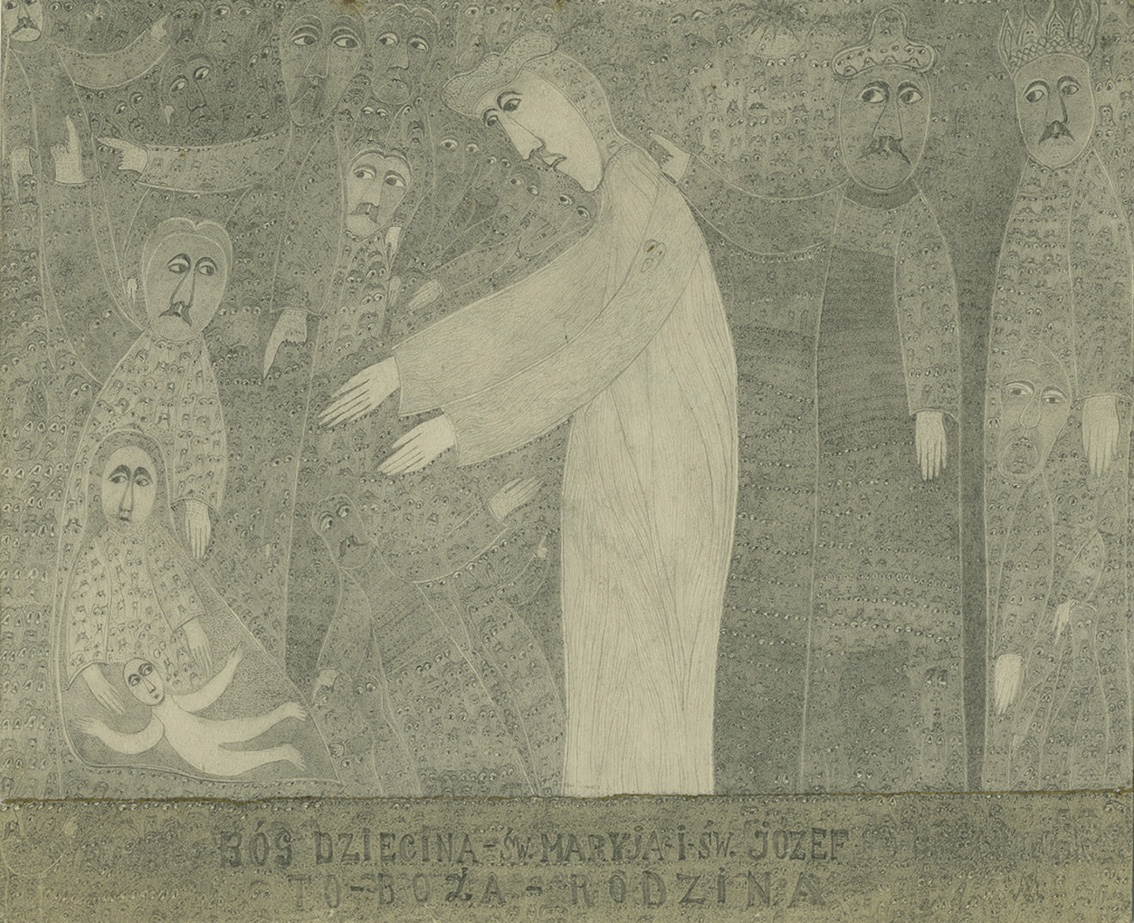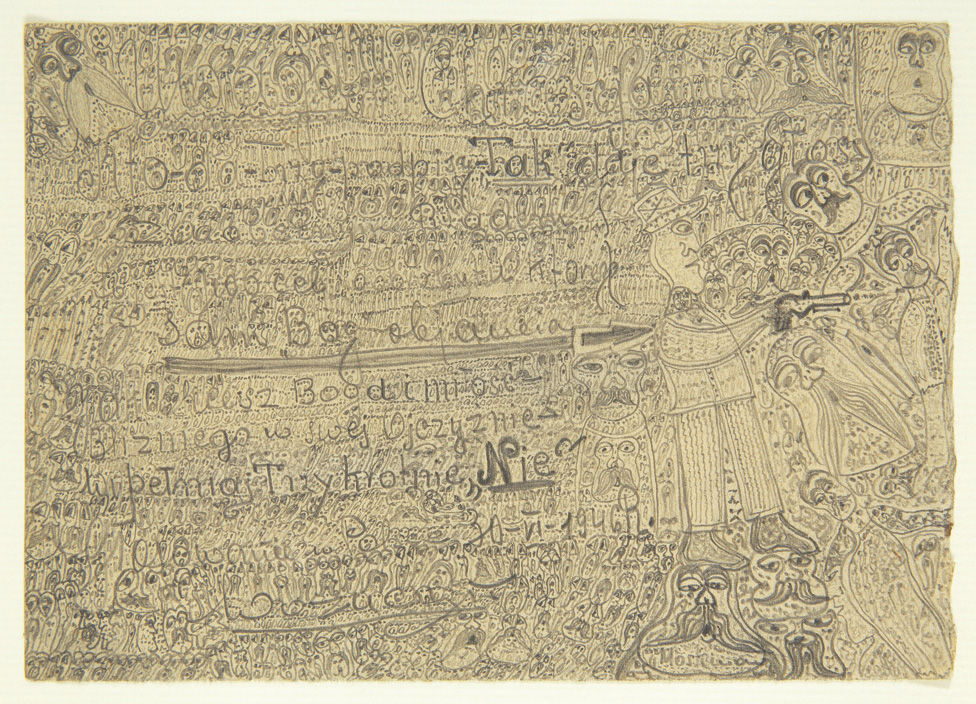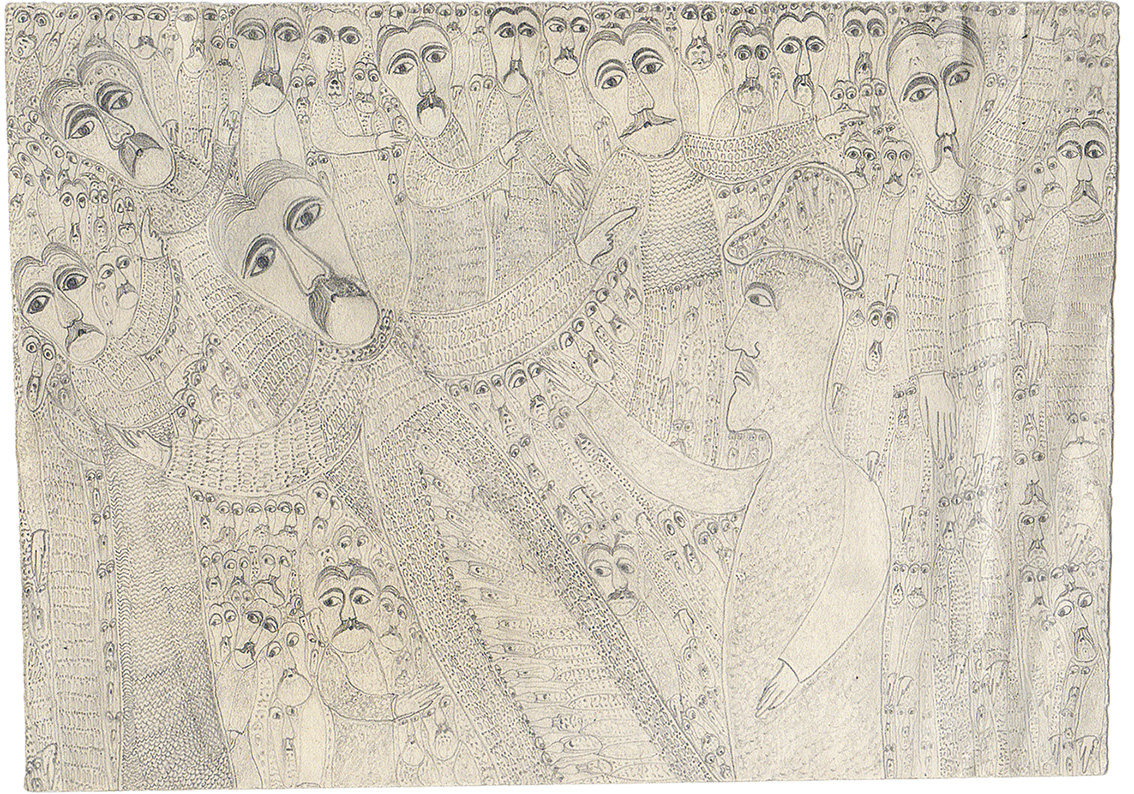Monsiel, Edmund
Poland, 1897 - 1962
Edmund Monsiel, a Polish shopkeeper with untreated schizophrenia, started drawing during World War II. When German forces took over his shop, he feared arrest and fled to his brother’s house, where he passed the remainder of the war hiding in a dark attic. Under these conditions, by the light of a candle, Monsiel started to draw his highly detailed pencil works. After the end of the war, he continued to live in isolation, taking a job as a machine operator. He was a quiet and devout man who feared the forces of evil. Much of his work is dominated by religious imagery, with representations of priests, God, Christ or the Devil. His intricate, highly detailed line drawings are frequently dominated by moustached faces, in full face and in profile, often reproduced in multiples within larger forms, the background of his pictures made up of hundreds of pairs of staring eyes. The overall effect is overwhelming, particularly given the scale of the drawings (average size 15 x 10 cm) such that the composition threatens to be lost in the elaborate chaos of detail. Monsiel produced hundreds of pieces of artwork in a 20-year period. Although many were lost, over 550 drawings and sketches remain intact. Monsiel is regarded as one of the most important of the European Outsider Artists.


